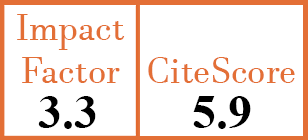Pathophysiology
Phenotypes of osteoarthritis: current state and future implications
L.A. Deveza1, A.E. Nelson2, R.F. Loeser3
- Rheumatology Department, Royal North Shore Hospital and Institute of Bone and Joint Research, Kolling Institute, University of Sydney, NSW, Australia. leticia.alle@sydney.edu.au
- Department of Medicine, University of North Carolina at Chapel Hill, and Thurston Arthritis Research Center, University of North Carolina School of Medicine, Chapel Hill, NC, USA.
- Department of Medicine, University of North Carolina at Chapel Hill, and Thurston Arthritis Research Center, University of North Carolina School of Medicine, Chapel Hill, NC, USA.
CER12718
2019 Vol.37, N°5 ,Suppl.120
PI 0064, PF 0072
Pathophysiology
Free to view
(click on article PDF icon to read the article)
PMID: 31621574 [PubMed]
Received: 30/08/2019
Accepted : 04/09/2019
In Press: 15/10/2019
Published: 15/10/2019
Abstract
In the most recent years, an extraordinary research effort has emerged to disentangle osteoarthritis heterogeneity, opening new avenues for progressing with therapeutic development and unravelling the pathogenesis of this complex condition. Several phenotypes and endotypes have been proposed albeit none has been sufficiently validated for clinical or research use as yet. This review discusses the latest advances in OA phenotyping including how new modern statistical strategies based on machine learning and big data can help advance this field of research.


